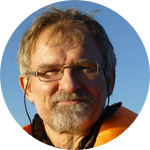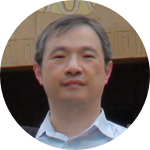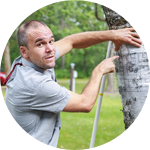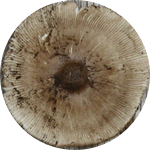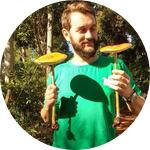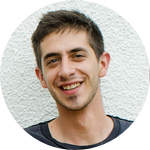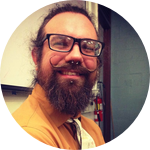About This Project
Of an estimated 3.2 million species of fungi, only some 120,000 are known to science. Most of the undescribed species reside in the tropics. In 2014, myself and a fellow mycologist, Roo Vandegrift, collected some 350 samples of fungi from Reserva Los Cedros; one of the last unlogged watersheds on the western slope of the Andes. We are now looking to begin the microscopic and molecular analysis portions of our research, with the goal of publishing on our findings.
Ask the Scientists
Join The DiscussionWhat is the context of this research?
Of the conservatively estimated 3.2 million species of fungi on Earth, only some 120,000 have been described (1). The vast majority of the undescribed species are widely considered to reside in the tropics (1)(2)(3). Of those tropical areas, the one which has been subject to the least mycological exploration is the Andean-Amazonian region, where famously biodiverse countries like Bolivia have only some 800 fungal records (4). By comparison, the species of fungi reported from the significantly less diverse the British Isles number around 13,000 (4). There is a comparable disparity in expected diversity and the number of published species in Ecuador (5).
What is the significance of this project?
As climate change, resource extraction, corruption and political volatility further threaten already critically endangered habitats across the world, it is incumbent upon biodiversity researchers to document, preserve, and study as much as possible while they can. Reserva Los Cedros — one of the last unlogged watersheds on the western slope of the Andes — was chosen as the collection site for this project, which we visited in 2014. The reserve has since been declared a mining concession by the Ecuadorian government and is slated for destruction. The identification and description of rare or endemic species from the reserve will help demonstrate the value of these habitats and the importance of their conservation.
What are the goals of the project?
I will be spending the month of January at the University of Oregon as a visiting researcher. During that time, I will be both recording microscopic features and preparing tissue samples for sequencing at an off-site location. The final combination of microcharacters, ITS sequences, macro photography, and field notes will be sufficient to begin to publish on the mycological diversity of the Los Cedros Reserve as it compares to the rest of Ecuador, the Andes, South America and the world at large. All of our data so far (notes and photographs) have been made freely available at the citizen science website, Mushroom Observer (6)(7), which will be periodically updated with new information as our work progresses.
Budget
The most expensive task remaining for our collections is DNA analysis. We have been lucky to find a lab which is willing to provide the necessary services and equipment at cost. The gene region sequenced will be the internal transcribed spacer (ITS), which, while not necessarily phylogenetically informative, is regarded as the "fungal barcode" gene, which is valuable for the purposes of identification and determining species novelty. Any future checklists, monographs, or descriptions of new species we wish to create are dependent upon the presence of at least some level of genetic analysis. Sequencing the ITS region of these 350 collections is the next step down that exciting road. Additionally, DNA extracts will be stored frozen for future work by taxonomic experts on individual groups of fungi.
Now that the project has met its fundraising goal of $4,000, we have added a stretch goal of $1500 to sequence additional gene regions for some especially interesting collections.
Endorsed by
 Project Timeline
Project Timeline
Tissue samples will be taken alongside microscopy of each specimen over the course of January 2018, and all 350 tubes containing those tissue samples will be packaged and sent to the sequencing facility at the end of that month. The results of the sequencing will be available 1–2 months after receipt of the samples.
Dec 30, 2017
Arrive at the University of Oregon
Dec 30, 2017
Project Launched
Jan 02, 2018
Begin microscopic analysis and tissue sampling
Jan 31, 2018
Complete microscopic analysis and tissue sampling
Feb 01, 2018
Ship prepared tissue samples to sequencing facility
Meet the Team
Danny Newman
I am independent mycologist specializing in the systematics of Neotropical fungi, particularly those of the Andean and Amazonian rainforests. I have served as a photographer and research assistant to graduate students of San Francisco State University, SUNY College of Environmental Science and Forestry, and the University of Oregon. In 2012, I founded the Sociedad Micologica de Bolivia, which has offered numerous expeditions, workshops and field courses for researchers, students, park guards and the general public. All of my data are made available on the citizen science website, Mushroom Observer, where I am an enthusiastic contributor.
Roo Vandegrift
I recently finished my PhD in Dr. Bitty A Roy’s lab at the University of Oregon, with a fair bit of shared advising by Dr. George C Carroll. For most of that, I worked on the ecology of tropical Xylariaceae (as wood decay fungi, and as ubiquitous endophytes). In 2011, I received the NSF Graduate Research Fellowship, and the MSA Graduate Fellowship in 2013, in addition to small awards from the Oregon Mycological Society, Sonoma County Mycological Association, the Cascade Mycological Society, and the Mycological Society of San Francisco. Also in 2013, I participated in NSF’s East Asia and Pacific Summer Institute (EAPSI) program in Taiwan, where he was able to work with the incomparable taxonomist of all things Xylariaceae, Dr. Yu-Ming Ju. Time in his lab was fundamental to my training as a mycologist.
After graduating, I took a postdoctoral researcher position with the Biology and the Built Environment Center, also at the University of Oregon, where I study the fungi found in indoor environments, and their relation to indoor air quality and energy efficiency.
Project Backers
- 88Backers
- 125%Funded
- $5,008Total Donations
- $56.91Average Donation
